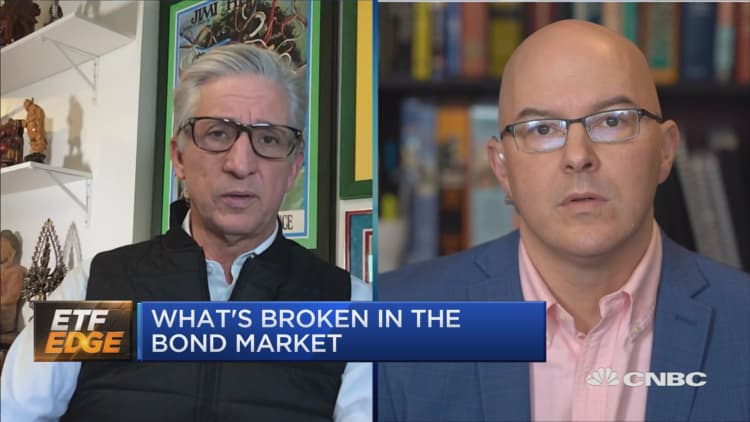
There's something broken in the bond market that could be dangerous for investors.
Simply put, traditional bond pricing services aren't working, said Dave Nadig, chief investment officer at ETF Trends.
There have recently been big discrepancies in the net asset values (NAVs) of bond ETFs and where they're actually trading. The NAV is determined by the total value of its assets minus the value of its liabilities. It's basically often used to help buyers and sellers determine a "fair price" at which a fund is trading.
But in the last few weeks, bond ETFs have been trading at sizeable discounts to the NAV, like the iShares iBoxx $ Investment Grade Corporate Bond ETF (LQD).
And Nadig said that's living proof of the downside to current bond pricing services.
"[If you're a bond indexer], you're putting that index out [and] you have bonds in your index that may not have traded for days or weeks, particularly less liquid securities like high yield and high-yield munis," he said Monday on CNBC's "ETF Edge." "But at the end of the day, you still have to price that, you have to put a net asset value out there as a mutual fund or as an ETF."
The way pricing works for those bonds that haven't traded in a while, said Nadig, is that a model looks at the last time a bond has traded and then adjusts the untraded price based on how similar assets have traded to determine a fair value.
The problem with that model is that it doesn't react quickly, which is imperative in the current high-volatility market.
"When you have a hyper liquid market with a hyper volatile movement in price like we've seen across the entire fixed income market, those services lag," added Nadig. "So what happens is the NAV stays stuck at an artificially high level, not because those bonds are worth that much, but because the pricing service hasn't recognized the new reality."
And that, Nadig said, has created that "artificial gap" that has bond ETFs trading at a discount.
Although there could be signs that things are reversing. On Thursday, LQD was trading at a market cap just short of $35 billion while its net assets were valued at about $34.2 billion.




